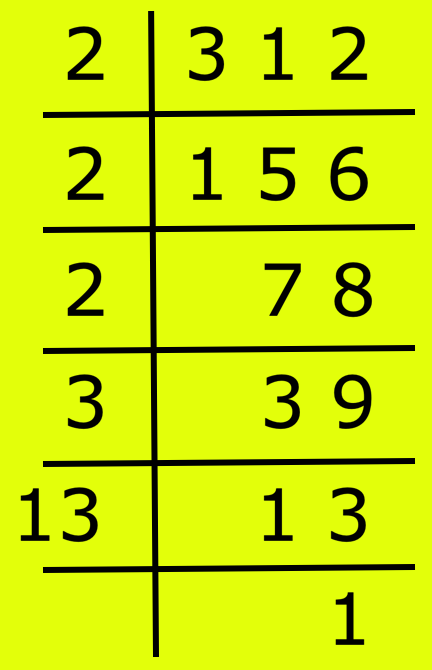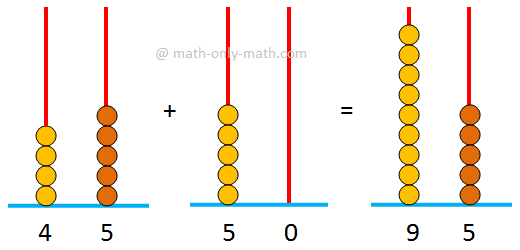Worksheet on Comparison between Rational Numbers
Comparison of rational numbers or fractions can be easily done by following some steps as mentioned below:
1. A positive integer is always greater than zero.
2. A negative integer is always less than zero.
3. A positive integer is always greater than a negative integer.
4. In case of fractions, remember to make the denominator of the fraction to be positive. If not, make it positive by multiplying both numerator and denominator by (-1).
5. For like fractions (i.e., same denominators) comparison is just done by comparing the numerators of the fractions and the one having higher numerator will be greater of the two fractions.
6. For unlike fractions (i.e., different denominators) first of all denominators are made same by taking the L.C.M. of the denominators and then comparing them as in case of like fractions.
Based on above mentioned steps try to solve some questions:
1. (i) Compare 23 and 73.
(ii) Compare 45 and 3−5
(iii) Compare 811 and 922.
(iv) Compare −2345 and −39.
(v) Compare 13−24 and 9−4
2. Arrange the following in ascending order:
(i) 25, 65, 15, 135, 95.
(ii) 1925, 1625, 2725, 75.
(iii) −29, 113, −327, 13−9.
(iv) 45, 616, 920, 135.
(v) −21105, 1221, 165, 20105.
3. Arrange the following in descending order:
(i) 716, 916, 2116, 1216
(ii) 317, 1217, 2134, 13−34
(iii) 515, −1640, 245, 18−25
(iv) 1421, 17, −1721, −1921
4. Aman and Suraj are taxi drivers. Aman started his journey at 8:30 a.m. and stopped at 9:30 a.m. by covering a distance of 20 km. on the other hand, Suraj travelled 50 km in 2 hours. Assuming that they travel at constant speed, compare the distances travelled by them in first hour of their journey.
5. Find the largest and the smallest rational numbers among the following.
(i) 47, - 47 and - 715
(ii) 0, - 56, 23 and −1314
6. (i) Arrange 35, - 23, - 45 and 56 in ascending order.
(ii) Write - 109, 29, 512 and 718 in descending order.
Solutions:
1. (i) 73 > 23
(ii) 45 > 3−5
(iii) 811 > 922
(iv) −2345 < −39
(v) 13−24 > 9−4
2. (i) 15, 25, 65, 95, 135.
(ii) 1625, 1925, 2725, 75.
(iii) 13−9, −29, −327, 113.
(iv) 616, 920, 45, 135.
(v) −21105, 20105, 1221, 165.
3. (i) 2116, 1216, 916, 716.
(ii) 1217, 2134, 317, 13−34.
(iii) 245, 515, −1640, 18−25.
(iv) 1421, 17, −1721, −1921
4. Suraj travelled more than Aman.
5. (i) Largest = 47, smallest = - 47
(ii) Largest = 23, smallest = - −1314
6. (i) - 45 < - 23 < 35 < 56
(ii) 512 > 718 > 29 > −109
Rational Numbers
Decimal Representation of Rational Numbers
Rational Numbers in Terminating and Non-Terminating Decimals
Recurring Decimals as Rational Numbers
Laws of Algebra for Rational Numbers
Comparison between Two Rational Numbers
Rational Numbers Between Two Unequal Rational Numbers
Representation of Rational Numbers on Number Line
Problems on Rational numbers as Decimal Numbers
Problems Based On Recurring Decimals as Rational Numbers
Problems on Comparison Between Rational Numbers
Problems on Representation of Rational Numbers on Number Line
Worksheet on Comparison between Rational Numbers
Worksheet on Representation of Rational Numbers on the Number Line
From Worksheet on Comparison between Rational Numbers to HOME PAGE
Didn't find what you were looking for? Or want to know more information about Math Only Math. Use this Google Search to find what you need.
Recent Articles
-
5th Grade Factors and Multiples | Definitions | Solved Examples | Math
Mar 23, 25 02:39 PM
Here we will discuss how factors and multiples are related to each other in math. A factor of a number is a divisor which divides the dividend exactly. A factor of a number which is a prime number is… -
Adding 2-Digit Numbers | Add Two Two-Digit Numbers without Carrying
Mar 23, 25 12:43 PM
Here we will learn adding 2-digit numbers without regrouping and start working with easy numbers to get acquainted with the addition of two numbers. -
Worksheet on 12 Times Table | Printable Multiplication Table | Video
Mar 23, 25 10:28 AM
Worksheet on 12 times table can be printed out. Homeschoolers can also use these multiplication table sheets to practice at home. -
Vertical Subtraction | Examples | Word Problems| Video |Column Method
Mar 22, 25 05:20 PM
Vertical subtraction of 1-digit number are done by arranging the numbers column wise i.e., one number under the other number. How to subtract 1-digit number vertically? -
Worksheet on 11 Times Table | Printable Multiplication Table | Video
Mar 22, 25 05:08 PM
Worksheet on 11 times table can be printed out. Homeschoolers can also use these multiplication table sheets to practice at home.






New! Comments
Have your say about what you just read! Leave me a comment in the box below. Ask a Question or Answer a Question.